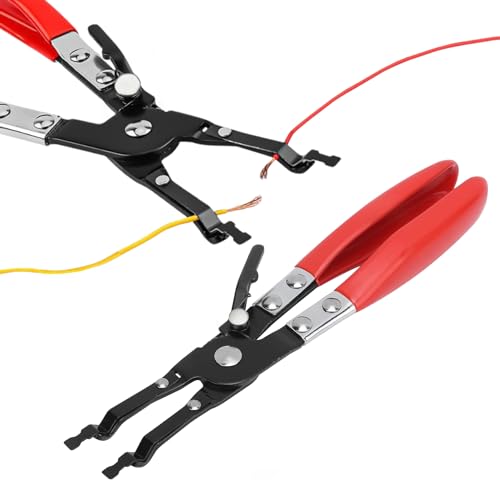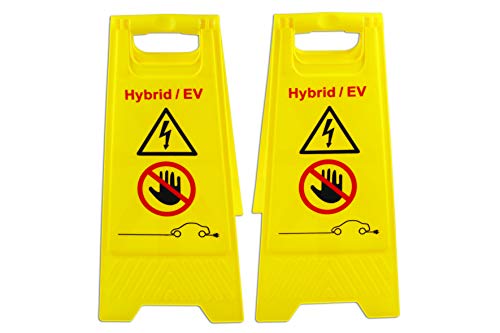Hello. I have a Citroen C Zero 2012. There are many type 1 j1772 charging stations in our city, but the car does not charge at any of them. Only one way allows charging, which is to disconnect the terminal from a small 12V battery for a short time. Maybe there is a way to switch the relay in the car so as not to disconnect the terminal.
You are using an out of date browser. It may not display this or other websites correctly.
You should upgrade or use an alternative browser.
You should upgrade or use an alternative browser.
Charging the car at public charging stations type 1 j1772.
- Thread starter Slavik37
- Start date

Help Support Mitsubishi i-MiEV Forum:
This site may earn a commission from merchant affiliate
links, including eBay, Amazon, and others.
Hello and welcome to the forum
Post in thread 'Help to get a wrecked car working, clearing error codes'
https://myimiev.com/threads/help-to-get-a-wrecked-car-working-clearing-error-codes.4082/post-51986
Not sure what county you’re in, but in Europe most public AC charging stations have a type 2 connector and you need a type 2 to type 1 adapter cable, which some EVSEs don’t like. I take it you can charge the car at home without problems?There are many type 1 j1772 charging stations in our city, but the car does not charge at any of them.
No, but some smart people have come up with modification of the adapter cable (post #114)Maybe there is a way to switch the relay in the car so as not to disconnect the terminal.
Post in thread 'Help to get a wrecked car working, clearing error codes'
https://myimiev.com/threads/help-to-get-a-wrecked-car-working-clearing-error-codes.4082/post-51986
It seems as if you might be clearing an error code by disconnecting the negative terminal from the 12V battery.
Do you notice any malfunction indicator lamps on the instrument panel before the disconnect trick?
What is the age and condition of your 12V battery? An old, weak or worn out battery can cause many strange faults in an EV. Check and verify that it is fully charged and has a sufficient capacity to operate the car.
What is the history of the car? Has it been in an accident?
Do you notice any malfunction indicator lamps on the instrument panel before the disconnect trick?
What is the age and condition of your 12V battery? An old, weak or worn out battery can cause many strange faults in an EV. Check and verify that it is fully charged and has a sufficient capacity to operate the car.
What is the history of the car? Has it been in an accident?
At public stations, the first thing I do is connect the type 1 cable to the car, then in the application I click charge on the dashboard in the car, the socket icon appears, flashes several times and disappears. It does not charge. And when I repeat the same thing and briefly disconnect and connect terminal 12 in the car, it charges. Sorry, I'm writing from a translator, maybe something is not clear.
Does this charger have a box with lights or is it a straight cable?I live in Ukraine. My 220V charger that I bought with the car charges perfectly, I have checked it and it has no problems with the small battery.
Does the public charging station have a cable attached or do you bring your own?At public stations, the first thing I do is connect the type 1 cable to the car, then in the application I click charge on the dashboard in the car, the socket icon appears, flashes several times and disappears. It does not charge. And when I repeat the same thing and briefly disconnect and connect terminal 12 in the car, it charges. Sorry, I'm writing from a translator, maybe something is not clear.

$29.99
Car Tissue Holder for Mitsubishi i-MiEV 2009-2020, Car Napkin Cover for Car PU Leather Car Visor/Backseat Organizer Hanging Paper Towel Clip Car Accessories,Orange-1
hongchuangbaihuoshangdiangerenduzi

$26.99
KISHACZ 4 PCS Car Door Lock Cover for Mitsubishi i-MiEV 2009-2020, Car Door Latch Lock Protective Cover, Door Latch Lock Cover, Door Latch Guard Car Decorative Accessories,B Black
Yuanpingshilixiuhanshangmaoyouxiangongsi

$15.99
Built Industrial Adjustable 3 Jaw Oil Filter Wrench with Adapter and Plier Tool Set for Auto Care
Infinite-Commerce

$150.00
$299.99
EP Home Smart Electric Vehicle Charger, 40 Amp Level 2 EV Charger, NEMA14-50 Wall Indoor/Outdoor Electric Car Charging Station, 240V, 25 Ft Cable
Energy Pro Cable

$28.99
FIPOISA Car Rear Bumper Protector for Mitsubishi I-Miev, Carbon Fiber Trunk Door Sill Protection Strip Sticker, Trunk Door Entry Guards Plate Decorative Accessories
yuanpingshizhanghongyushangmaoyouxiangongsi
Yes, my charger has an LED indicator, and there is also the ability to switch the charging current from 7 to 16 A. From the public station I use a type 1 cable to the car.Does this charger have a box with lights or is it a straight cable?
Does the public charging station have a cable attached or do you bring your own?
Just to clarify, this type 1 cable you use is permanently attached to the public charging station?From the public station I use a type 1 cable to the car.
By Level 1 do you mean that the voltage is 120VAC at these public stations? Are these stations for sure using the J1772 protocol, or might they just be 120VAC supplies with the connection resistors in the plug handle for older OBCs.
Are you disconnecting the 12V negative while the EVSE is plugged into the car?
Are you disconnecting the 12V negative while the EVSE is plugged into the car?
Never seen anything like itYes.
You could do two things:
1. Get an OBD dongle and app (Car Scanner or Hobdrive) or use a laptop to see if there are any fault codes when you try to charge
https://myimiev.com/threads/smartphone-tablet-apps-for-i-miev-c-zero-and-ion.4936/
https://myimiev.com/threads/overvie...ters-their-functionality-and-the-future.5719/
2. Do the the modification mentioned on the car side (OBC), might not fix it, but will do no harm...
Ukraine is using 230VAC, like the rest of Europe. Might be 'lost in translation' but I'm pretty sure he refers to a Level 2, public EVSE with a type 1 connectorBy Level 1 do you mean that the voltage is 120VAC at these public stations? Are these stations for sure using the J1772 protocol, or might they just be 120VAC supplies with the connection resistors in the plug handle for older OBCs.
At these stations, the output voltage is 220V.
So after connecting the connector to the car and switching on in the application to charge I briefly disconnect and attach the terminal minus 12v and the charging begins
So after connecting the connector to the car and switching on in the application to charge I briefly disconnect and attach the terminal minus 12v and the charging begins
By Level 1 do you mean that the voltage is 120VAC at these public stations? Are these stations for sure using the J1772 protocol, or might they just be 120VAC supplies with the connection resistors in the plug handle for older OBCs.
Are you disconnecting the 12V negative while the EVSE is plugged into the car?
Attachments
Unfortunately it's not that simple, but below gives you a good overview of what's required exactlyMaybe I switch some signal that comes to the charging station that gives charging permission.
https://www.instructables.com/Arduino-EV-J1772-Charging-Station/
Interestingly, Citroen C Zero for 2015 years at such a charging station is charged without disconnecting the terminal minus 12V.Unfortunately it's not that simple, but below gives you a good overview of what's required exactly
https://www.instructables.com/Arduino-EV-J1772-Charging-Station/
Hmm, that really sounds like the issue our German colleagues reported, newer triplets weren’t affected, the additional HW used in their ‘hack’ is adjusting the voltage of the CP signal…Interestingly, Citroen C Zero for 2015 years at such a charging station is charged without disconnecting the terminal minus 12V.
- Joined
- Sep 1, 2012
- Messages
- 187
This is (*properly*) called a "Mode 2" charging cable or portable EVSE (pEVSE) or (if you really must) a 'granny-charging cable' - it is *not* a charger. For AC charging, the charger built in to the car is doing the 'charging' ie converting AC to DC so the high voltage (HV) traction battery can store it. If you are using a DHAdeMO charger then the DC current goes directly from the charger (correctly named in this case) to the EV's battery, bypassing the on-board AC charger - one reason why the system can handle so much higher power than AC charging.I live in Ukraine. My 220V charger that I bought with the car charges perfectly, I have checked it and it has no problems with the small battery.
I may be a bit 'on the spectrum' but using incorrect terminology just adds wildly to the problems of efficient communication - especially if you throw in a foreign language! I do wish everyone would take the trouble to refer to things properly as it would simply make life so much easier.
I gather your pEVSE cable works fine which eliminates any issues with the car - on the AC charging side at least.
If there is some cosmic incompatibility issue between these public EVSEs and the 'triplets' (I-MiEV, iOn and C-Zero) then I would suggest you use an adaptor to turn on the EVSE into which you then plug your pEVSE. If you cannot source one locally, I would be happy to make and sell you one. PM me if you so desire.
It’s seems to be a problem with the 2012 OBC firmware, he mentioned that it worked fine with a 2015 model..If there is some cosmic incompatibility issue between these public EVSEs and the 'triplets' (I-MiEV, iOn and C-Zero)
Good idea.then I would suggest you use an adaptor to turn on the EVSE into which you then plug your pEVSE.
The Renault Twizy used such a commercially available solution, however these adapters work off a type 2 EVSE
Never seen a solution where you get a domestic plug at the end of a tethered type 1 cable?
You seem to have experience with such a (DIY?) adapter, can fill the blanks?
Sorry, I may have used the wrong names, in the future I will use only the correct names. I know that the car has an AC DC converter that charges a 16 kW battery with a voltage of 359 V.This is (*properly*) called a "Mode 2" charging cable or portable EVSE (pEVSE) or (if you really must) a 'granny-charging cable' - it is *not* a charger. For AC charging, the charger built in to the car is doing the 'charging' ie converting AC to DC so the high voltage (HV) traction battery can store it. If you are using a DHAdeMO charger then the DC current goes directly from the charger (correctly named in this case) to the EV's battery, bypassing the on-board AC charger - one reason why the system can handle so much higher power than AC charging.
хочете.
Attachments
Similar threads
- Replies
- 23
- Views
- 2K
- Replies
- 20
- Views
- 1K
- Replies
- 10
- Views
- 580































